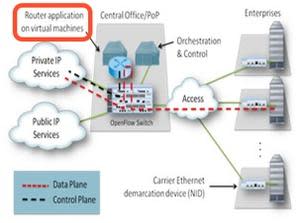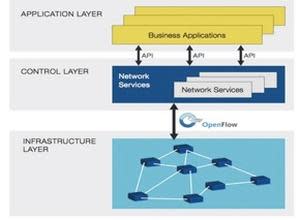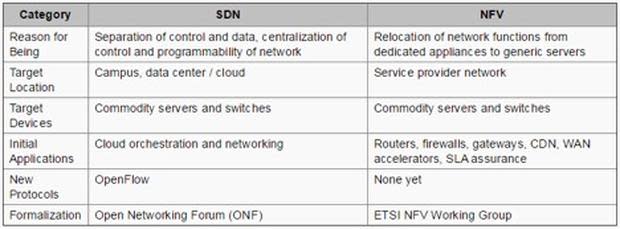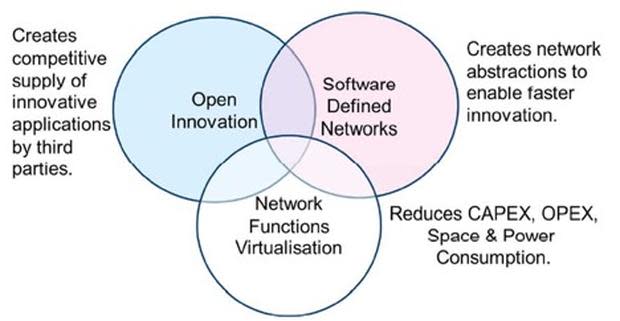NV, NFV, and SDN: What's with the networking acronym explosion?

Image: iStock
At a recent convention, a break-out panel discussed the merits of Network Virtualization (NV) versus Software-Defined Networking (SDN). Until then, I thought they were the same. As someone who writes about networking, I figured I better get educated. Not far down the road of knowledge, I bumped into another player -- Network Functions Virtualization (NFV).
I also figured out why engineers are so excited about virtualization in the networking space. Put simply, network engineers and designers want "fully-programmable" networks. To see how close engineers are to getting their goal, let's look at each of the three technologies. SDN Central, an independent source of NV, NFV, and SDN information, was the source for the following paraphrased descriptions.
Network Virtualization is the ability to simulate a hardware platform -- in this case a network appliance -- in software. The physical hardware is relatively unchanged, but the computing software or "virtual instance" resides on a server elsewhere on the network. The advantage according to SDN Central is: "A single hardware platform can support multiple virtual devices or machines, which are easy to spin up or down as needed. As a result, a virtualized solution is more portable, scalable, and cost-effective than a traditional hardware-based solution."
For an in-depth view of NV, download the 2014 Network Virtualization Report from SDN Central.
Network Functions Virtualization is NV on steroids. Rather than control a network platform, NFV controls network functions such as network address translation, firewall, and intrusion detection. SDN Central adds, "NFV consolidates and delivers the networking components needed to support a fully-virtualized infrastructure -- including virtual servers, storage, and other networks using standard IT virtualization technologies." Figure A depicts how NFV would act as a "managed router service."
Figure A

Software-Defined Networking is the next evolution. NV controls the device. NFV controls an application. SDN controls the entire network.
Figure B

To accomplish that, SDN uses a control plane (intelligence) and a forwarding plane (method of moving digital traffic). Figure B depicts how traffic moves from the controller upward (Northbound) to the Application Layer or downward (Southbound) to the Infrastructure Layer. SDN Central adds the following details about each:
Controllers allow network administrators to dictate to the underlying systems (like switches and routers) how the forwarding plane should handle network traffic.
Northbound APIs communicate with the applications and business logic, helping network administrators shape traffic and deploy services.
Southbound APIs relay information to the switches and routers.
Which one is used where?
NV is used when disparate networks are required within a virtual infrastructure. For example, NV could isolate a group of servers containing sensitive information from a company's main network.
Determining when to deploy NV is easy compared to NFV or SDN. Fortunately, I discovered the article NFV and SDN: What's the Difference? written by Prayson Pate at SDN Central. Starting with NFV, Pate intimated the technology was developed by service providers to improve their bottom line. "They (service providers) looked to standard IT virtualization technologies and found NFV helped accelerate service innovation and provisioning," writes Pate. This also meant network engineers could eliminate much of the expensive, bulky, and proprietary hardware.
Pate then moved to SDN. University researchers, frustrated with the need to either change devices or the controlling software every time a new test was ran, came up with SDN. Before long, data-center operators got wind of what the researchers were doing. Employing SDN in a data center, allowed the operators more control, and an easy way to connect an ever-increasing number of virtual-machine instances.

Image courtesy of SDN Central
Why not use both?
My mention earlier of network engineers and designers wanting fully-programmable networks was also taken under consideration by Pate.

Image courtesy of SDN Central
"Network Functions Virtualization is highly complementary to Software Defined Networking (SDN), but not dependent on it (or vice-versa)," mentions Pate. "Network Functions Virtualization can be implemented without a SDN being required, although the two concepts and solutions can be combined and potentially greater value accrued."
The combination of SDN and NFV allows:
An expensive and dedicated appliance to be replaced by generic hardware and advanced software.
The software control plane to move from an expensive location (in a dedicated platform) to an optimized location (server in a data center or POP).
The control of the data plane to be abstracted and standardized, allowing for network and application evolution without the need for upgrades of network devices.
This means engineers are getting closer to their goal.


